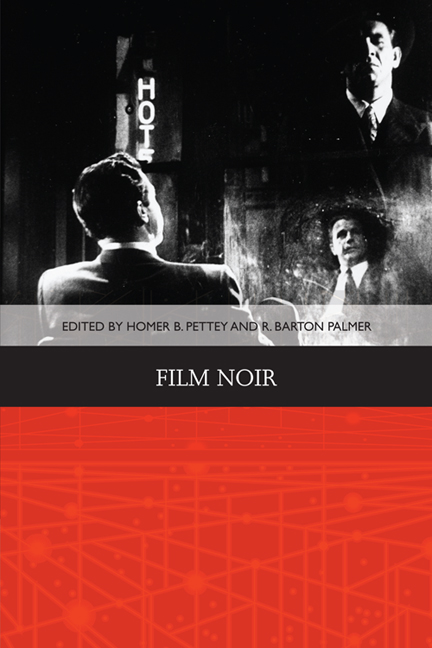Book contents
- Frontmatter
- Contents
- List of Illustrations
- Acknowledgements
- Notes on the Contributors
- Introduction: The Noir Turn
- 1 The Cinema of Uncertainty and the Opacity of Information from Louis Feuillade's Crime Serials to Film Noir
- 2 Warning Shadows: German Expressionism and American Film Noir
- 3 Hard-boiled Tradition and Early Film Noir
- 4 Cold War Noir
- 5 Noiring the Pitch: The Conflicted Soundtracks of Out of the Past, The Blue Gardenia and The Long Goodbye
- 6 Split Screen: Sound/Music in The Stranger/Criss Cross
- 7 Gender and Noir
- 8 The Subversive Shade of Black in Film Noir
- Postscript: A History of Our Writing about Film Noir
- Selected Book Chapters on Film Noir
- Selected Film Noir Books
- Selected Guide to Film Noir
- Index
1 - The Cinema of Uncertainty and the Opacity of Information from Louis Feuillade's Crime Serials to Film Noir
Published online by Cambridge University Press: 05 August 2016
- Frontmatter
- Contents
- List of Illustrations
- Acknowledgements
- Notes on the Contributors
- Introduction: The Noir Turn
- 1 The Cinema of Uncertainty and the Opacity of Information from Louis Feuillade's Crime Serials to Film Noir
- 2 Warning Shadows: German Expressionism and American Film Noir
- 3 Hard-boiled Tradition and Early Film Noir
- 4 Cold War Noir
- 5 Noiring the Pitch: The Conflicted Soundtracks of Out of the Past, The Blue Gardenia and The Long Goodbye
- 6 Split Screen: Sound/Music in The Stranger/Criss Cross
- 7 Gender and Noir
- 8 The Subversive Shade of Black in Film Noir
- Postscript: A History of Our Writing about Film Noir
- Selected Book Chapters on Film Noir
- Selected Film Noir Books
- Selected Guide to Film Noir
- Index
Summary
The more you see, the less you know.
The Man Who Wasn't There (Joel and Ethan Coen, 2001)As we try to define the cinematic origins of, and influences on, film noir, we inevitably find ourselves faced with the bigger problem of defining noir itself. Following stories that take the divergent paths of hard-boiled detectives, police investigations and romantic deadly triangles, and traverse across urban cityscapes, suburban households and remote wastelands, we realise the ‘centre’ of noir cannot be located. Critics have argued equally persuasively on behalf of German Expressionism or Poetic Realism as the true progenitor of the genre, but here I want to argue that the path to finding the antecedents to noir lies not in mapping out specific visual motifs or narrative elements, such as the ‘rain-slicked highway’, high-contrast lighting or even the ‘hard-boiled detective’, since each of these components is frustratingly variable from film to film. Rather, we are better off approaching noir from the question of its epistemological and ideological missions, which are much more consistent across the many films we identify as noir, despite the dissimilar styles, narrative lines and character types we are likely to cross in our investigation.
If we start with the kind of knowledge produced and the status of evidence, especially the role of visual evidence in defining what we know in noir, then I would argue that Louis Feuillade's crime films in the silent era are a productive venue to explore as the genre's predecessor. These films, as I have argued elsewhere, offer neither a strategy of ‘showing’ nor one of ‘telling’, but rather a third path in film history, one preoccupied with the limits of knowledge, the ‘cinema of uncertainty’. As Allan Sekula notes in his seminal essay, ‘The Traffic in Photographs’, the photographic image has long been at the centre of the crisis of bourgeois culture, which simultaneously claims that the world is a collection of visible, ‘knowable and possessable objects’ but also maintains that the creative artist/spirit can transcend and transform the alienating machine of science/rationality and its economic handmaiden, capitalism.
- Type
- Chapter
- Information
- Film Noir , pp. 16 - 37Publisher: Edinburgh University PressPrint publication year: 2014



